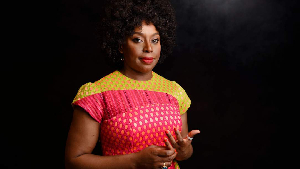Social media can be defined as an online network, self-publishing media that promotes interaction and sharing. And advocacy campaigners, irrespective of what they stand for, must increase its usage because they stand to gain a lot.
This media is more personal and democratic: anyone can publish a blog, a tweet or set up an online page. Social media platforms such as Twitter, Facebook, Google plus, and online petitions reach people where ever they are.
In spite of its numerous advantages, there is a lot of reluctance in some NGO circles (and policy makers) to use social media. They attribute it partly to a generational thing but the fact is – you have to engage if you want to build effective campaigns –and that, it is no longer ok to just be analogue! Social media platforms are not fundamentally different from previous analogue platforms. Telephone was weird to people when it was first invented but it is now accepted globally.
This is not to say that emails, letters and other ways of interacting are no longer important or impactful or should be shelved on the shelves of history, but there is huge potential for campaigners to be taken more seriously and gain more when they learn or are able to use social media better.
There are so many evidences to prove that using social media to engage or challenge journalists, policy-makers & companies works. For instance, Franklin Cudjoe of IMANI Ghana first announced his resignation from the Government’s Committee on the Sustainability of the Single Spine Pay Policy (SSPP) on social media before it was officially announced.
Again, “the court of public opinion” on social media forced the government of Ghana to reverse a decision to rename the National Hockey Stadium after the late President John Evans Fiifi Atta Mills. The death of Ghana’s ace international Journalist Komla Dumor was first announced and confirmed on the social media before credible online news portals like BBC, citifmonline and myjoyonline confirmed the story. Not forgetting a picture of President John Mahama posing in front of CNN on flicker which raised a whole lot of controversies in 2013.
Furthermore, Justine Sacco lost her job as the Communications Director of the New York-based internet empire InterActive Corp for having made a puerile tweet that linked Aids with race and also used the same medium to issue an apology to the “millions of people living with the virus”. Similarly, controversial singer, Madonna, is currently battling with a racist slur gaffe on Instagram.
It is now a common trend to see journalist write stories and make analysis from tweets and Facebook posting of public figures and policy makers. Even breaking news from some media houses are first communicated to their audiences through the social media.
A powerful tool such as this obviously cannot be undermined in the field of advocacy.
Social media, however, will not always be appropriate. E-mails, press releases, letters, petitions, phone calls are all still valid. Your preference target group should however lead you to choose between the social media, analogue channels or combine the two. Thus, the use of social media should not be in a conclave but as part of a package of approaches/tactics, bearing in mind that you cannot be on all social media platforms but you can focus on popular ones like Facebook, Twitter & LinkedIn.
Twitter has caught on most as a tool for advocacy. Twitter is where public discussions start today: news breaks on twitter and all the basic outlines of commentary on that news item are expressed before the story even hits the wires a few hours later, let alone the papers and broadcast a day or two later. A research on the demand for newspapers and toiletries in America has shown that the demand for toiletries is increasing while that of newspapers is reducing drastically. Facebook and Twitter are now big in Africa and young people are using it for campaigning while LinkedIn is now very useful for business.
There are other new online organising sites such as Avaaz, and 38 Degrees that claim numerous campaign successes. Avaaz is a global web movement aimed at bringing people-powered politics to decision-making everywhere in the world. Social media is a key component of what they do. However, they do not work on their own. They adopt courses at key moments – driven by what their ‘members’ will get behind. They work with other NGOs and CSO’s (though they do not always credit them). CSO’s and NGO’s can learn from some of their tactics and replicate them in their work.
There are so many ways to engage or use social media. These include: Targeting decision makers directly e.g. through @President John Dramani Mahama, posting on their sites; Running ‘campaigns’ on social media using stunts, audio-visual, hashtags (get stuff trending), action days; Online petitions – run online – deliver in person; Support / amplify offline efforts; Interact with supporters / build a movement; Share successes and news; and for research.
It is not just broadcasting. It’s networking, sharing. You are part of a public conversation or engagement. Do your research, determine your target group and take your followers into consideration. Follow and engage with the right people while searching for what conversations are trending that you need to be part of.
I must admit that it’s not easy. There are some rules of thumb and you have to practice.
It might be easy to send a tweet but you should know it is difficult to build a network: beware of anyone saying “we should do a social media campaign on X”. Advocacy on the social media needs focus and lots of planning. As with any public debate, if you don't speak up, someone else will.
You could tweet or post links to your organisation's materials online, links to articles mentioning your organisation or staff, links to articles in line with your organisation's views mix with messages on other subjects you’re interested in. You can also retweet other peoples’ conversations or engage in conversation.
Don’t be a robot. Remember: it’s a message to your personal network. Don’t let it be just a broadcast blast channel or you turn people off.
CAVEAT: This is a PUBLIC medium. Understand defamation. Watch out for spam. Don’t tweet your specific location (unless at a conference). Don’t ‘diss’ the organisation or your colleagues or ever use defamatory words. Don’t comment on areas of policy that aren’t yours.
You should often make your tweets or posts personal. Something from a known contact or named person is more influential than from an organisation. It is only logical: which email are you more likely to open? One from a trusted contact or one from an organisation’s mass emailing?
Opinions of Friday, 7 February 2014
Columnist: Ayamga, Elizabeth Alampae














